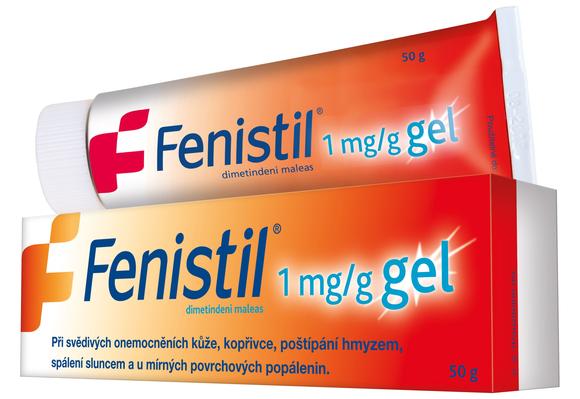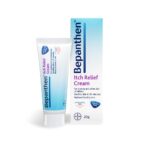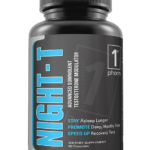Fenistil Gel: Ingredients, How to Use, Side Effects, Reviews

Fenistil gel is a skin medication containing the active ingredient dimetindene. It is produced by GSK and Novartis in some countries. Fenistil gel is an effective treatment for itchiness caused by several irritated skin conditions including dermatoses, urticaria, insect bites, sunburn, and superficial burns. It comes both in topical and systemic forms.
A double-blind, placebo-controlled study conducted to assess the effect of Fenistil gel on itch threshold reported that the gel produced an increase in itch threshold when compared to placebo.
What does Fenistil contain?
The active substance is dimetindene maleate. Each gram of gel contains 1 mg of dimetindene maleate. The other ingredients (excipients) are benzalkonium chloride, sodium edetate, carbomer, propylene glycol, sodium hydroxide, and purified water.
How Fenistil works
Fenistil gel stops the itch by blocking the action of histamine, which is a substance released by the body during allergic reactions. As the gel penetrates well into the skin, itching and skin irritation are rapidly relieved, within a few minutes. Fenistil gel also has a local anesthetic effect.
What do you need to know before you use Fenistil gel?
Do not use Fenistil gel if you are allergic to dimetindene maleate or any of the other ingredients of this medicine. If you are not sure, ask your doctor or pharmacist.
Warnings and precautions: Avoid prolonged exposure to the sun on extensively treated areas of the skin.
- Tell your doctor in case of very severe itching or extensive lesions.
- If you have any questions, talk to your doctor or pharmacist before using Fenistil gel.
Children: In infants and small children, do not use on extensive areas of the skin, particularly if raw or inflamed.
Other medicines and Fenistil: Tell your doctor or pharmacist if you are using, or have recently used, any other medicines, including medicines obtained without a medical prescription.
Can I use Fenistil gel during Pregnancy and breastfeeding?
No, you should not use Fenistil gel during pregnancy or breastfeeding, on extensive areas of the skin, especially if raw or inflamed. Do not apply the gel on the nipples if you are nursing a baby.
Can I drive or handle machines while using Fenistil gel?
Yes, the application of Fenistil gel to the skin does not affect your ability to drive or use machines.
Important information about some of the ingredients of Fenistil
Fenistil gel contains propylene glycol which may cause mild, localized skin irritation. It also contains benzalkonium chloride which is an irritant and can cause skin reactions.
How to use Fenistil gel
Always use this medicine exactly as described in this leaflet or as your pharmacist has told you. You should check with your doctor or pharmacist if you are not sure.
Apply 2 to 4 times daily to the affected area.
Consult your doctor if your symptoms do not improve within one week. If you use more Fenistil than you should If you or a child accidentally swallow this medicine, contact your doctor immediately. If you have any further questions on the use of this medicine, ask your doctor or pharmacist.
What are the possible side effects of Fenistil gel?
Like all medicines, Fenistil gel can cause side effects, although not everybody gets them. Some side effects are of unknown frequency (frequency cannot be estimated from the available data)
- dry skin,
- skin burning sensation
- itchy rash
Reporting side effects
If you get any side effects, talk to your doctor or pharmacist. This includes any possible side effects not listed in this leaflet. You can also report any side effects directly to the national reporting system.
How to store Fenistil
Keep this medicine out of the reach and sight of children. Do not use Fenistil after the expiry date which is stated on the carton and tube.





